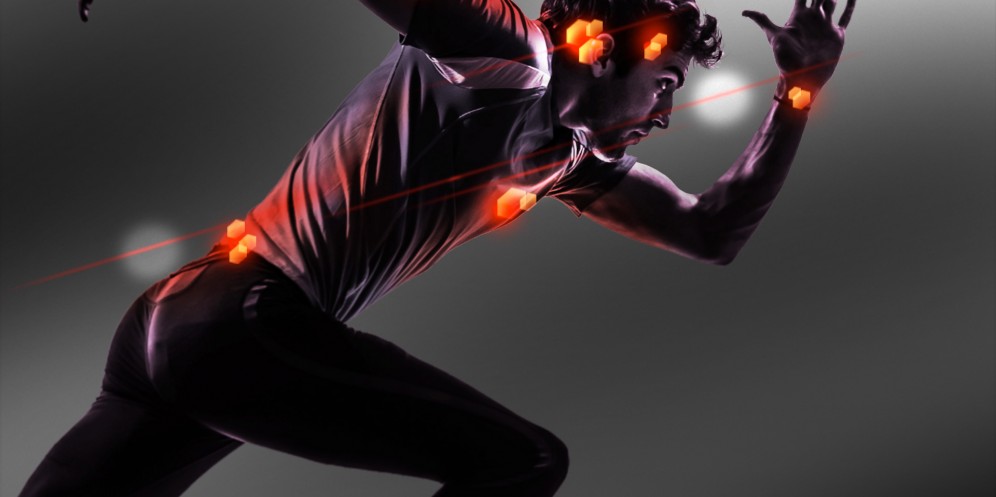
The Risk Associated with Exercise
While some people know the long term benefits of resistance exercise, the risk of getting injured steers many individuals from weightlifting on their own.
The likelihood of an injury greatly decreases when a proper warm up, stretch, and good form is used, however many athletic trainers can recall instances where clients were hurt in spite of practicing this.
Heavy lifting, or what’s more commonly known as “ego lifting” (see Do You Need to Lift Heavy to Grow), often risks damaging underdeveloped tendons and muscle tissue. When you continue lifting this way, the problems can accumulate and get worse with time if undiagnosed early enough.
Exercising with pre-existing injuries are another concern for clients who prefer more resistance training over aerobics. If you’ve had a recent surgery or were recently injured from a sport, adding tension to this area can create more problems and set you further back in recovery.
As stated from top sport orthopedic surgeon James Andrews, competitive athletes at all levels should spend 3-4 months a year resting their bodies from strenuous activity.
To alleviate concerns over getting injured on the weight room floor, biometric and sensors technology have recently exploded on the consumer market to help people properly work out without the supervision of a trainer or a licensed professional.
How Motion Sensor Technology Can Prevent Exercise Injuries

As the prices for computer technology have been decreasing each year, wearables devices today are becoming more commonplace in fitness and health community. The reason for this could be the demand for more data to practice and measure the outcomes of our performance.
Motion sensors operate with accelerometers and gyrometers, which senses force and velocity measurements along with dynamic and static movements. With these sensors attached to the person, we can detect how quickly someone is moving and the kind of movement they’re performing.
This is important information for athletic trainers and strength conditioning specialists to observe, as the sensors can detect if someone is performing an exercise or stretch correctly and is using enough force to initiate a neuromuscular response.
Individuals who haven’t trained in awhile or are new to exercise often perform exercises with partial repetitions or rush through the motions of an exercise, which leads to sub-par results.
With computers and sensors becoming smaller with time, you would think that this technology would be customized to better meet the needs of the consumer.
This has been proven to be beneficial in preventing injuries, as seen with the new integration of bike fitting services with motion technology to prevent discomfort for new riders.
Now, what kind of wearable devices have this technology? The recently released Apple Watch Series 1 & 2, sleep sensor devices (such as the Beddit sensor), the popular Fitbit wristbands, and many other fitness trackers as well.
Introduction to a Sensor Network System
While sensors are great for monitoring velocity and angles of motion, they’re limited in the amount of information they can capture. For example, the Apple Watch can detect your heart rate and walking steps from the dynamic movements you make throughout the day, but it can’t determine the amount of weight that’s in your hand when you’re lifting it.
The ideal solution for this would be a network of sensors that work together to gather an accurate snapshot of the training performance for the client.
Similar to a Wi-Fi or computer network, a sensor network functions with multiple sensors communicating with each other and integrating the information into a monitor, in this case, your smartphone.
Sensor networks can be established and connected using Bluetooth®technology, since many of our smartphones, laptops, printers, and other devices already connect this way.
I’ve designed one concept for a sensor network system with my PoloTech Workout Suit that can be worn as normal work attire or when heading straight to the gym.
The suit consists of two sensors, the Apple Watch and the GymWatch fitness band that communicates with your smartphone to track workouts, give user feedback, and analyze exercise motions as you lift weights. For more details or to make a purchase, click here.
The Wrap Up
Exercise injuries can occur much less frequently if we use more precaution while working out. In addition to warm-ups, stretching, and form, we can improve our training by implementing wearable sensors to our workouts without the supervision of a personal trainer. Sensor technology seems to be an accurate way to measure performance and avoid discomfort and pain while making improvements to your physique.
What else do you want to know?
How Sleep Wearables Can Help Improve Your Sleep
Difference Between the Apple Watch Series 1 & 2
How Workout Suits Can Help You Exercise While Traveling
How the Apple Watch Can Improve Your Workout Experience

Leave a Reply
You must be logged in to post a comment.